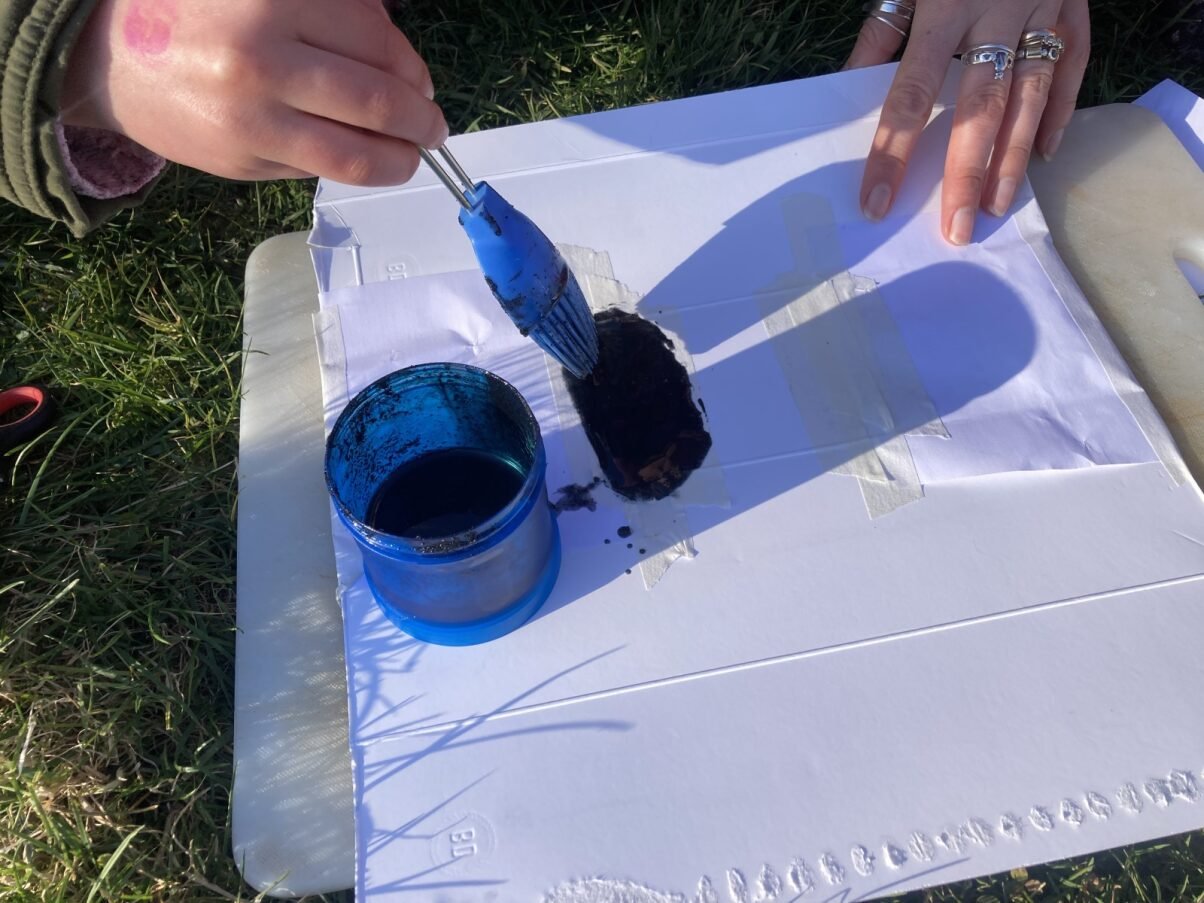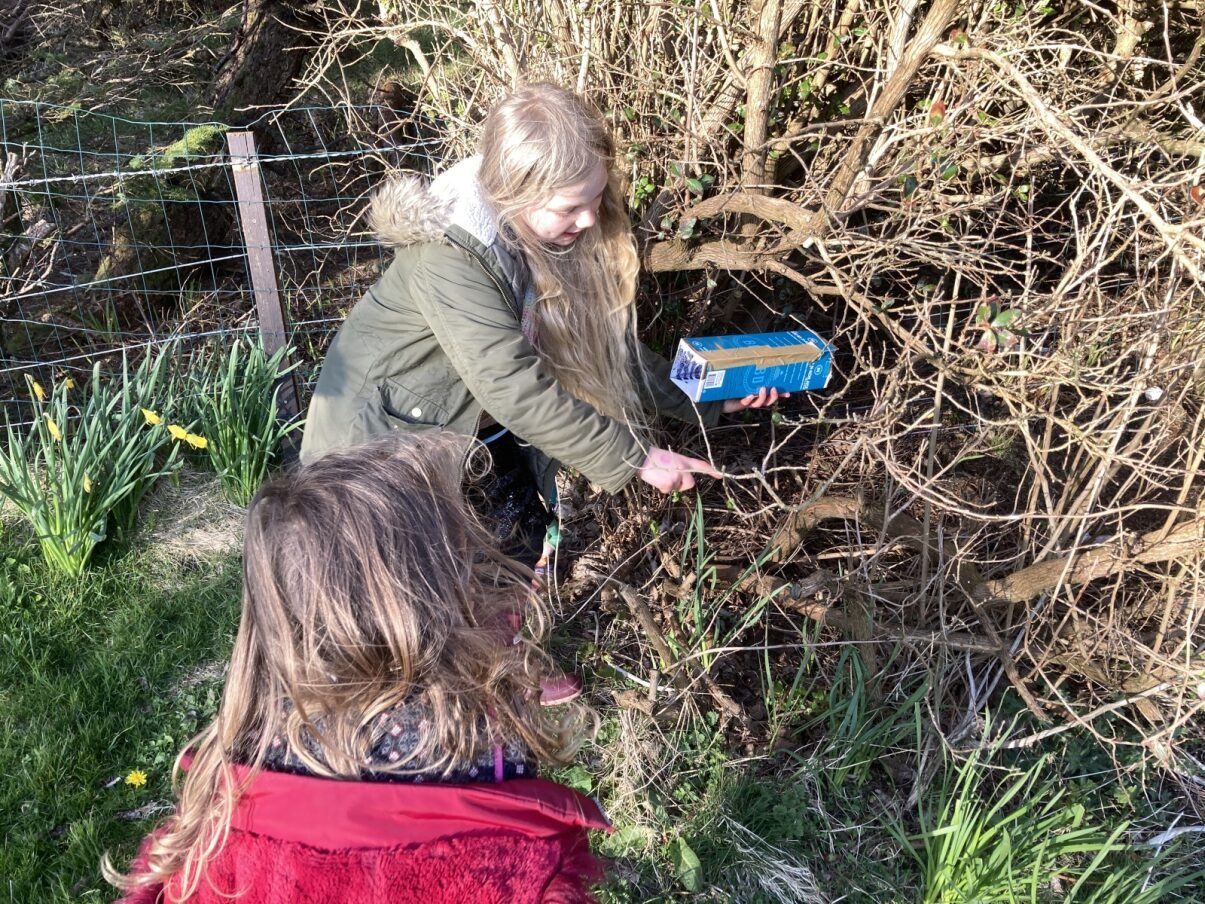Mammal monitoring methods: Footprint tunnels
Figure 1: Creating a footprint tunnel - a perfect family activity!
Footprint tunnels offer an accessible and non-invasive approach to surveying the presence of hedgehogs and other small mammals in your local environment. These tunnels can be crafted easily and affordably using common household items. Creating and setting footprint tunnels is a fun and educational activity that can engage the whole family while contributing valuable data to local wildlife conservation efforts.
Follow our step-by-step guide below to create your own and discover which small mammals inhabit your local area!
Types of Tunnels
Depending on the mammals you wish to survey for, there are two primary styles of tunnels:
Hedgehog Tunnels:
These tunnels are long, triangular tubes typically baited with wet cat or dog food.
Alternatively, ready-made hedgehog tunnels can also be purchased for convenience – see here.
Small Mammal Tunnels:
Shorter and square-shaped, these tunnels are usually baited with grain or live mealworms.
Make your own Hedgehog Tunnel
Figure 2: Materials needed for a Hedgehog Footprint Tunnel
Materials Needed
Large cardboard box
String/twine
Blank white paper
Paper clips
Masking tape
Paintbrush
Carbon (charcoal) powder
Vegetable oil
Small dish/tray
Wet cat/dog food
Method
1. Form Your Tunnel Shape.
Fold your cardboard into three even sections to create a triangular-shaped tunnel.
Aim for a length of about 90cm, with each section approximately 25cm wide.
2. Prepare the Base.
Secure two pieces of paper at either end of the tunnel base using paper clips.
Position your bait dish in the center and secure with tape.
3. Fill the gaps between the paper and bait with strips of masking tape (these will serve as ink pads).
Figure 3: Adding the masking tape (ink pads)
4. Add Bait: Place wet cat or dog food in the bait dish.
5. Load Ink Pads:
Mix charcoal powder and vegetable oil in a 50:50 ratio in a bowl.
Paint the mixture onto the masking tape liberally.
Figure 4: Loading the ink pads
6. Assembly: Fold up the sides of your tunnel and secure with string.
Figure 5: Forming the tunnel shape
7. Positioning: Place the tunnel in a sheltered outdoor spot, such as against a hedge or garden wall.
8. Monitoring:
Check the tunnel daily, replacing paper and bait as necessary.
Identify tracks, log them using the Mammal Mapper app, and share your findings on social media!
Make your own Small Mammal Tunnels
Figure 6: Constructing a Small Mammal Footprint Tunnel
Materials Needed
Clean juice or milk carton
Blank white paper
Paper clips
Masking tape
Paintbrush
Carbon (charcoal) powder
Vegetable oil
Small dish/tray
Grain/live mealworms
Method:
1. Prepare the Carton: Cut off the ends of the carton to create a square-shaped tube.
2. Set Up the Base:
Secure the bait dish in the middle of the carton base with masking tape.
Attach paper on either side of the bait dish with paper clips, leaving a 5cm gap.
Fill the gap with strips of masking tape.
Figure 7: Setting up the base
3. Bait Placement: Add grain or live mealworms to the bait dish.
4. Ink Pad Preparation: Mix charcoal powder and vegetable oil in a 50:50 ratio and apply to the masking tape.
Figure 8: Loading the ink pads
5. Placement: Position the tunnel in areas where small mammals are likely to frequent, such as among vegetation.
You may want to build up vegetation or stones around your tunnel to encourage more small mammals to visit.
You can waterproof your tunnel using clingfilm or plastic wrap.
Figure 9: The finished Small Mammal Footprint Tunnel
Figure 10: Positioning the Small Mammal Tunnel
6. Monitoring:
Check the tunnel daily, replacing paper and bait as necessary.
Identify tracks, log them using the Mammal Mapper app, and share your findings on social media!
Identifying Small Mammal Tracks
There are several different ID guides and online resources available to help identify small mammal tracks, here are a few suggestions:
Download our free ID guide here
Purchase the FSC Mammal Tracks and Signs here
Purchase our “How to find and identify mammals” publication here.
See our Mammal Feet, Toes and Tracks resource on the Mammal Youth Hub










